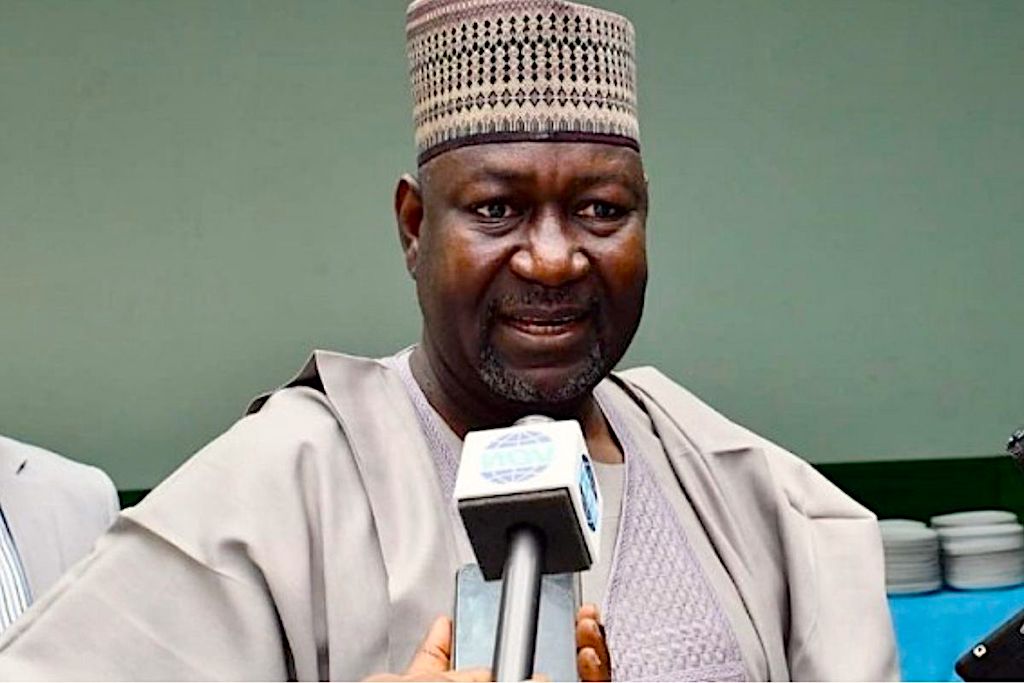DisCos yet to meter five million registered customers

[ad_1]

Inadequate metering of electricity consumers has been a running battle, even after privatisation, OPEOLUWANI AKINTAYO writes
The 11 electricity distribution companies are yet to meter over five million customers registered under their networks.
Data provided by the Nigerian Electricity Regulatory Commission, NERC, and verified by the Nigerian Bureau of Statistics, NBS, said of a total of 10.515m registered customers, only 4.773m had been metered as of December 2021.
A breakdown of the statistics from the NBS’ ‘2021 DisCos Electricity Report’ showed that
Abuja DisCo, also known as AEDC, had a total of 1.125m registered customers as of the year under review.
Benin, otherwise called BEDC, had 1.141m customers, Eko, also called EKEDC, had 614,370.
Enugu, otherwise known as EEDC, had 1.289m; Ibadan (IBEDC), 2.084m; Ikeja (IEDC), 967,195, and Jos (JEDC), 688,496.
Also, Kaduna (KDEDC) boasted of 758,339; Kano (KEDC), 668,843; and Port Harcourt (PEDC), 720,316. Yola (YEDC) had 458,297 customers in the year under review, bringing total customers by all the DisCos to 10.515m.
Of the total customers registered under each of the DisCos, AEDC was able to meter a total of 701,781; BEDC, 622,429; EKEDC, 348,016; and EEDC, 562,500.
Similarly, IBEDC metered 782,105; IEDC, 719,140; JEDC, 210,833; and KDEDC, 166,045.
Also, KEDC provided meters for 190,83; PEDC, 404,439; while YEDC was able to meter 65,098, bringing total metered customers to 4.773m.
This implies that of the over 200 million national population, DisCos’ customer registration exercise has been stagnant at 10m.
The NBS report corroborated statistics sourced from the Association of Nigerian Electricity Distributors, ANED, which said that there were 10 million registered customers and 4.7m metered as of fourth quarter 2021.
“At the end of 2021, over 10 million customers are registered, with approximately 47% metered,” the association said in its latest ‘Commercial KPIs for ANED ́s Members Q4/2021’ report.
A study of the metering progression on the ANED report showed that as of 2018, 42 per cent customers were metered.
In 2019, the percentage of customers metered dropped to 40 per cent in 2019. The association did not explain why the number of metered customers dropped.
Metered customers remained at 40 percent in 2020, increasing to 47 percent at the end of 2021.
A Nigerian Electricity Regulatory Commission’s quarterly report for the fourth quarter (Q4) of 2019 said as of the fourth quarter of 2019, inadequate metering remained a serious challenge in the industry, with only 3.918m (37.77 per cent) of the total customer population of 10.375m metered.
Although the number of metered customers increased to 47 per cent with the help of the Federal Government’s National Mass Metering Programme, NMMP, the number of registered customers remained stagnant at 10 million as seen in NERC’s report of 2019, and ANED’s 2021 report.
Both NERC and ANED did not disclose why the DisCos customers’ registration process remained at 10m despite over N2trn investments in the sector.
However, Spokesperson for Eko Electricity Distribution Company, EKEDC, Godwin Idemudia, disagreed with both NERC and ANED (an umbrella body for the DisCos) over registered customers’ statistics.
According to him, DisCos’ customer base was increasing because more people were building new houses and setting up businesses.
“Our customer population is increasing. Is it in terms of metering or customer base? I sincerely do not agree with that statistic at all.
“Based on the economy, people are building houses and Nigerians are opening up businesses. With that in mind, there is a need to have power connected to such investments.
Are we now insinuating that Nigeria has been stagnant for years? It sounds unrealistic as far as I am concerned.
“I am not condemning the source of your information, but I believe we need to look deeply into such claims. I do not believe EKEDC specifically provided any data to show we have been stagnant over the years,” he said.
The NERC Chairman, Sanusi Garba, had said that only 611,231 meters were deployed under the MAP scheme as of January 31 2022, noting that more than half of registered electricity customers in the country remained unmetered.
However, as a way to boost the sector’s liquidity, the Federal Government, through the National Mass Metering Programme, NMMP, offered to meter six million customers in batches.
Under the Central Bank of Nigeria and the World Bank-funded Programme, the ‘Phase 0’ of the NMMP flagged off on October 30, 2020, saw almost one million customers metered.
The Federal Government’s phase 1 metering programme slated to begin last month is also currently stalling.
The CBN said that it had disbursed the sum of N47.66 billion so far for the acquisition of 858,026 meters under the programme.
The NERC’s MAP as of the time of FG’s intervention in 2020 had barely reached 300, 000 households.
Spokesperson for Ikeja Electric, Felix Ofulue, had confirmed CBN’s visit to its office a few months ago after a similar visit to EKEDC.
According to him, the Federal Government had stepped in with various interventions to the power sector through the CBN.
“It was in the past that we used to shout about liquidity, but now, the Federal Government is beginning to step in with various interventions to the power sector. No more liquidity. What we have now are shortfalls, and the CBN visited IKEDC last week after its visit to EKEDC,” he told The PUNCH in a telephone conversation.
Ofulue, however, declined responding to enquiries on the IKEDC’s customer registration exercise.
Metering expert and Chartered Accountant, Olusesan Okunade, also corroborated Idemudia’s stand over the inadequacy of the reports on the static nature of DisCos’ customers registration process.
According to him, the increasing number of houses and businesses had made it difficult to believe the statistics quoted by the reports.
“We need to understand the registration we are talking about here. Is it registration of customers in addition to existing ones? I know that DisCos are currently registering customers for meters, and they go all out to do their KYC. We need clarity on the 10 million we are talking about here.
“By the last statistics, I know for the entirety of the DisCos, there were more than 20 million customers. And they are working on getting more via the MAP and other processes of closing the gap.
“I think between 2019 and now, there have been several people captured on their networks because they’ve gone out on a serious drive for people to report energy theft. People who know those committing energy theft and they have been encouraged to report because they have been made to know that if they don’t, the innocent ones will pay for the stolen power.
“This alone has created the drive in my own community for people to report energy theft. I also have friends here and there who have said the same thing. People now know that their bills are being created from consumption on their DTs. So, whenever you complain that you were given a high bill, you would either know it’s as a result of your consumption, or that there are people who are not captured under the DisCos network using electricity for free. That’s why they have been improving in their KYC all the time.
“If you say as of 2019 it was 10 million, and still in 2021 it was 10 million, then the report is faulty. If not for anything, several people have built their houses between 2019 and 2021. Few companies have also sprung up here and there and they’ve registered legitimately with the DisCos. So, it’s either we had a shortfall in 2019 that was over-bloated, or the 2021 report is not capturing the actual data.
“But this I will not blame either party. It is because we don’t have an accurate data process. It’s not peculiar to the power sector. It is a national problem, and we have been encouraging the DisCos to use technology to drive some of these things so that we can have accurate data for effective planning with regard to whatever we do.”
On the slow metering rate, he advised the Federal Government to step in with more support in importing more meters.
“The slow metering issue has to do with so many factors such as foreign exchange. Most DisCos have not been able to bring in meters because of the costs as we speak. But the good thing is that the NMMP has assisted them. So, if the government can deploy more into bringing in some meters, even if the consumers are going to spread the costs or factored into their bills, it will be an advantage. The government needs to get involved and monitor the DisCos while they are at it. The purchasing power of the consumers is very low as we speak. So, the government’s intervention will go a long way.”
[ad_2]

